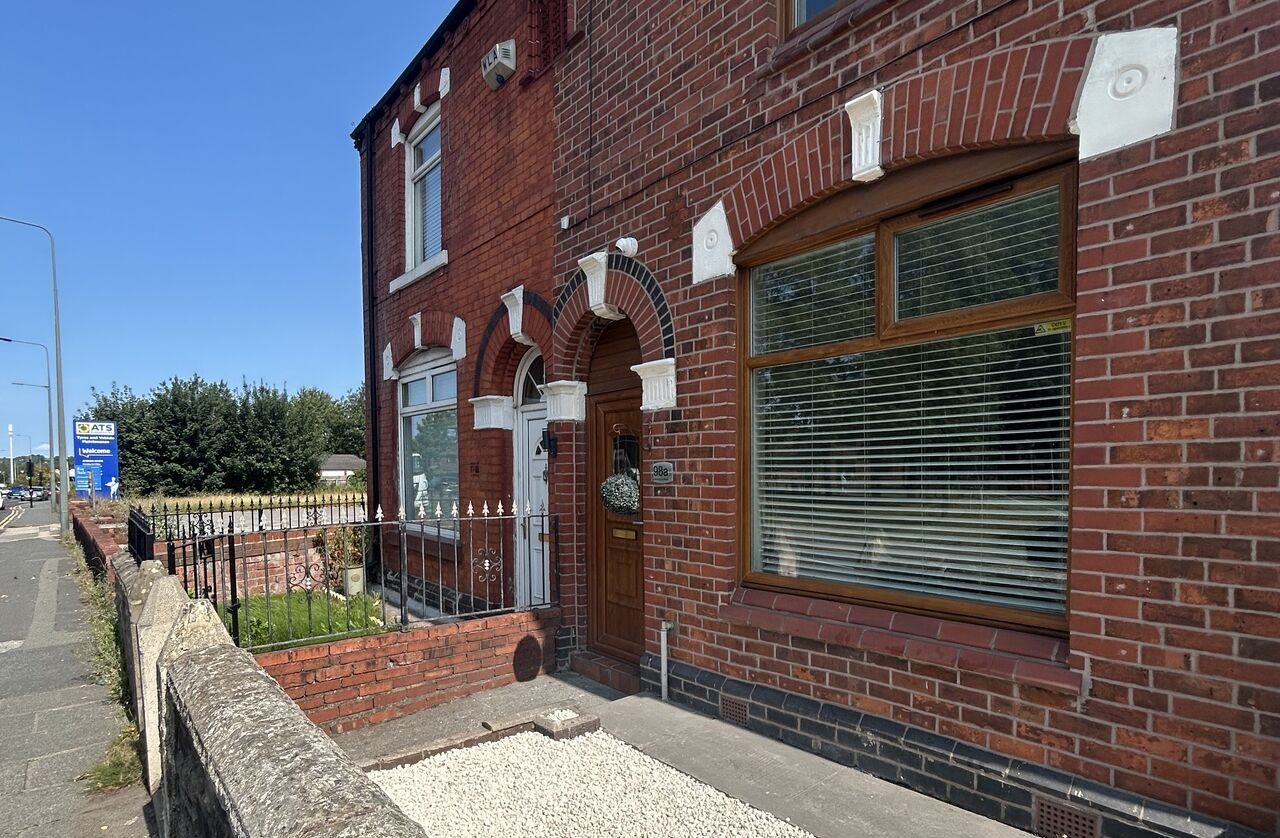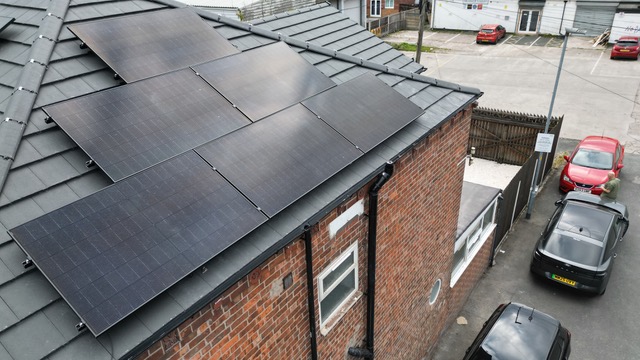Damp and mould affect thousands of lives, with the English Housing Survey reporting that 177,000 social homes face this issue. At Blueprint Housing and Investments, we saw an opportunity to tackle this challenge, by creating the UK’s first anti-mould supported houses.
This House in Multiple Occupation (HMO) sets a new standard for sustainable living. The Lancashire-based property has been transformed with innovative technologies to create a safe, energy-efficient environment that addresses critical housing needs. By using infrared wallpaper technology, the project highlights how strategic design can enhance the quality of life of residents while meeting modern safety and sustainability standards.
Addressing urgent needs in social housing
This project is more than just a renovation- it is a lifeline for vulnerable residents in desperate need of safe, healthy homes. With a focus on creating living spaces free from the danger of mould and damp, this project takes a stand against the unacceptable conditions that harm people’s lives.
Inspired by Awwab’s Law, which enforces higher housing standards to prevent tragic outcomes linked to mould-related health risks, this development is a step towards a positive change. It’s more than compliance – it’s about giving people the dignity and security of a home where they can feel safe.
Reshaping social housing with sustainable technologies
The development incorporated cutting-edge technologies designed to enhance both living conditions and environmental sustainability. Here’s how these upgrades are reshaping the future of supported housing:
Transforming homes: anti-mould wallpaper with infrared technology
Blueprint Housing and Investments partnered with NexGen to introduce a revolutionary solution: anti-mould wallpaper. This innovative product prevents mould growth by using infrared technology to regulate wall temperature, reducing moisture condensation. By creating a barrier that prevents moisture from penetrating the wall, surfaces remain dry and inhibit the conditions that promote mould formation. By addressing the root cause of mould, this technology offers a long-lasting and effective solution.
Infrared thermal wallpaper for energy efficiency:
Applied to ceilings, infrared thermal wallpaper boosts energy efficiency by improving thermal comfort and lowering energy consumption. By creating a healthier indoor environment, it ensures residents feel more comfortable while lowering utility bills. For more details on this technology, visit NexGen Heating.
Solar panels and battery storage for renewable energy:
The integration of solar panels and battery storage ensures that the property harnesses renewable energy, reducing utility costs and environmental impact. This system provides reliable, low-cost energy, enhancing the property’s sustainability profile.
Heat pump installations:
A modern heat pump system provides efficient heating, minimising energy use while maintaining comfortable indoor temperatures year-round. This installation is essential for reducing the property’s carbon footprint and operational costs, aligning with the latest environmental standards.
Community impact and long-term benefits
The property’s completion marks a significant step forward in the provision of supported housing. By prioritising energy efficiency and sustainable practices, the project achieves an impressive Energy Performance Certificate (EPC) rating of B, surpassing current targets for social housing. This high standard demonstrates the potential for similar projects to enhance living conditions and reduce environmental impact.
The development not only meets immediate needs but sets a benchmark for future supported housing initiatives. By incorporating innovative solutions that focus on resident well-being and environmental sustainability, this property contributes to the ongoing effort to reduce homelessness and improve housing quality in the UK.
The future of supported housing
The Leyland development is more than a housing project- it’s a vision of what supported living can and should be. By seamlessly blending thoughtful design and advanced technology, it demonstrates how homes can be safe, sustainable and high-quality environments. Tackling urgent issues like mould prevention and efficiency, this development sets a bold new benchmark for housing developments, proving that innovation and compassion can go hand in hand.
As the demand for safe, sustainable homes continues to rise, this project offers a replicable model for the future, prioritising the health and wellbeing of residents while ensuring a lasting positive impact on communities. For those in supported housing, life often comes with enough challenges – living in a home plagued by mould and safety concerns should not be one of them.
Want to learn more about how Blueprint Housing and Investments is transforming social housing? For more information about this solution or to explore similar projects contact Blueprint Housing and Investments here.
Infrared technology FAQ
What is infrared wallpaper and how does it work?
Infrared wallpaper is a revolutionary heating solution that improves energy efficiency by converting electrical energy into infrared heat. It can be applied to walls or ceilings to ensure even warmth throughout the space, helping to reduce overall energy consumption and maintain a comfortable environment.
How does infrared wallpaper help with energy efficiency?
Infrared wallpaper improves energy efficiency by emitting infrared radiation that heats objects and people directly, rather than heating the air. This allows for better thermal comfort and a reduction in the need for traditional heating methods, lowering utility bills and reducing the carbon footprint of the property.
Can infrared wallpaper be used as a heating solution?
Yes, infrared wallpaper is an effective heating solution. When applied to walls or ceilings, it generates heat that radiates throughout the room, providing warmth without the need for conventional radiators or heating systems. This makes it a highly energy-efficient option.


